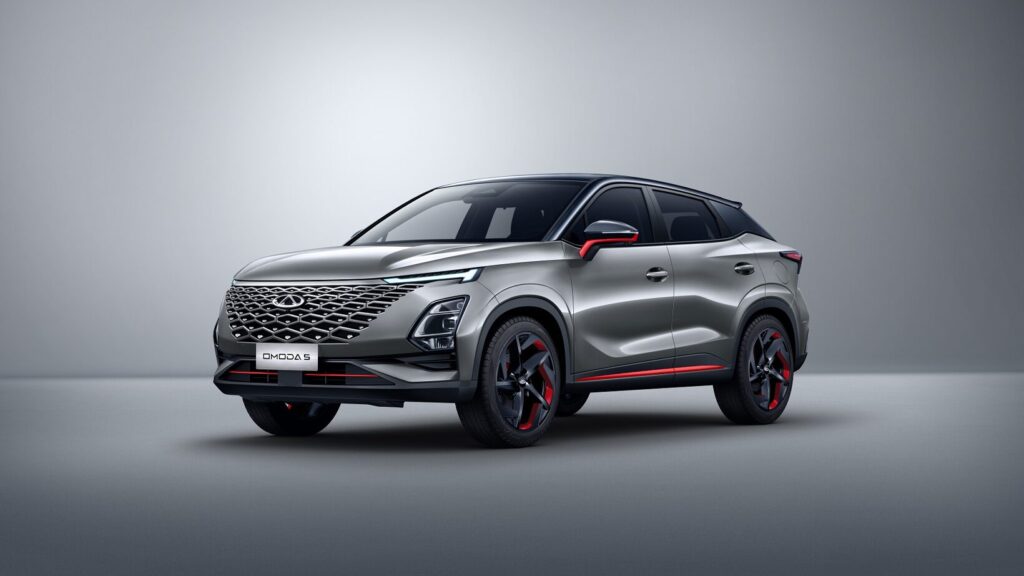Chery’s New UK SUVs: Can a Spec Sheet Advantage Defeat Established Rivals?

Chery has revealed the details of its two new SUVs for the UK, the OMODA 7 and JAECOO 8, and the on-paper specifications are certainly designed to grab headlines. But how do they truly stack up against the cars British buyers already know and trust?
Let’s move beyond the press release and conduct a sober, objective analysis of where these new contenders win, and where they will face their toughest challenges.
OMODA 7: A New Challenger in the C-Segment?
The OMODA 7 targets the heart of the market, taking on popular models like the Kia Sportage and VW Tiguan.
- Claim #1: Superior PHEV Range
Chery claims a pure electric range of up to 59 miles (95 km). This is indeed impressive, surpassing the Kia Sportage PHEV (43 miles WLTP). However, the competition is fierce. Volkswagen’s new Tiguan eHybrid boasts a range of up to 77 miles (124 km), and the BMW X1 PHEV also offers a competitive 50 miles (80 km). While the OMODA 7’s range gives it a clear edge over some rivals, it isn’t the undisputed technical leader. Its key advantage will likely lie in its price point. - Claim #2: A Show-Stopping Screen
The 15.6-inch sliding centre screen is a visual centerpiece, physically larger than the 12.3-inch or 15-inch screens found in the Sportage and Tiguan. - The Unanswered Questions: Impressive hardware is one thing, but the true test will be the software’s refinement and user experience. Can it meet the high standards of European consumers? Furthermore, the official WLTP certification will determine if the claimed range holds up in real-world testing.
JAECOO 8: A Dark Horse in the Premium 7-Seater Market?
The JAECOO 8 aims for the family SUV segment but has its sights set on premium rivals with its feature list.
- Claim #1: Dominant PHEV Performance
The claimed pure electric range of up to 99 miles (160 km) is staggering. It’s nearly triple that of the Kia Sorento PHEV (35 miles WLTP). More impressively, it surpasses premium German rivals like the BMW X3 PHEV (55 miles) and stands shoulder-to-shoulder with the Mercedes-Benz GLC 300e (81 miles), one of the longest-range PHEV SUVs available. If this spec is accurate, it becomes a nearly unbeatable unique selling proposition (USP). - Claim #2: Differentiated Luxury Features
The “Zero-Gravity” rear seats are a key differentiator, a feature typically reserved for flagship luxury saloons. This clearly signals Chery’s intent to compete on premium value, not just cost. - The Unanswered Questions: Will this feature be more than a gimmick, offering tangible long-journey comfort? And have the fundamentals—ride quality, handling, and refinement—been benchmarked to the level of established European and Korean premium brands? This can only be answered by a road test.
Insight: Three Mountains to Climb
On paper, Chery’s new models have the potential to disrupt the market, out-spec’ing Korean rivals and challenging some German premium offerings. However, to succeed in the UK, they must overcome three major hurdles:
- Brand Trust: The biggest barrier is overcoming the “Made in China” stereotype and building brand recognition from scratch.
- Real-World Validation: Official specs must be backed up by real-world performance, long-term reliability, and positive early-adopter reviews.
- After-Sales Network: A robust and reliable dealership and service network is non-negotiable for UK buyers.
In conclusion, Chery has done its homework and produced vehicles that are, on paper, incredibly competitive. But a car purchase is a complex decision that goes beyond a spec sheet. Whether Chery can conquer these challenges will determine its fate in the demanding European market.
My AI Jazz Project: